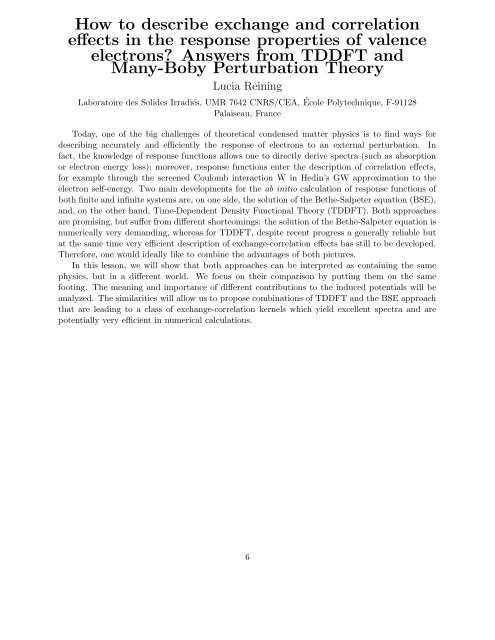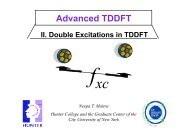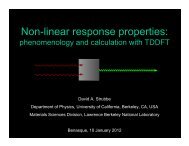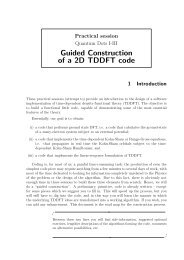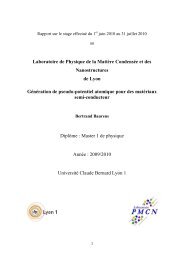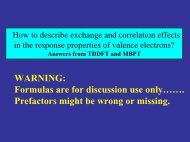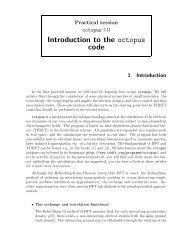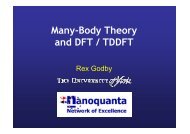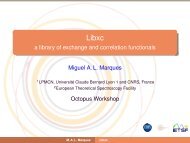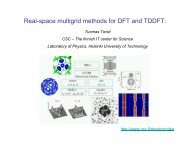TIME DEPENDENT DENSITY FUNCTIONAL THEORY ... - TDDFT.org
TIME DEPENDENT DENSITY FUNCTIONAL THEORY ... - TDDFT.org
TIME DEPENDENT DENSITY FUNCTIONAL THEORY ... - TDDFT.org
- No tags were found...
You also want an ePaper? Increase the reach of your titles
YUMPU automatically turns print PDFs into web optimized ePapers that Google loves.
How to describe exchange and correlation<br />
effects in the response properties of valence<br />
electrons Answers from <strong>TDDFT</strong> and<br />
Many-Boby Perturbation Theory<br />
Lucia Reining<br />
Laboratoire des Solides Irradiés, UMR 7642 CNRS/CEA, École Polytechnique, F-91128<br />
Palaiseau, France<br />
Today, one of the big challenges of theoretical condensed matter physics is to find ways for<br />
describing accurately and efficiently the response of electrons to an external perturbation. In<br />
fact, the knowledge of response functions allows one to directly derive spectra (such as absorption<br />
or electron energy loss); moreover, response functions enter the description of correlation effects,<br />
for example through the screened Coulomb interaction W in Hedin’s GW approximation to the<br />
electron self-energy. Two main developments for the ab initio calculation of response functions of<br />
both finite and infinite systems are, on one side, the solution of the Bethe-Salpeter equation (BSE),<br />
and, on the other hand, Time-Dependent Density Functional Theory (<strong>TDDFT</strong>). Both approaches<br />
are promising, but suffer from different shortcomings: the solution of the Bethe-Salpeter equation is<br />
numerically very demanding, whereas for <strong>TDDFT</strong>, despite recent progress a generally reliable but<br />
at the same time very efficient description of exchange-correlation effects has still to be developed.<br />
Therefore, one would ideally like to combine the advantages of both pictures.<br />
In this lesson, we will show that both approaches can be interpreted as containing the same<br />
physics, but in a different world. We focus on their comparison by putting them on the same<br />
footing. The meaning and importance of different contributions to the induced potentials will be<br />
analyzed. The similarities will allow us to propose combinations of <strong>TDDFT</strong> and the BSE approach<br />
that are leading to a class of exchange-correlation kernels which yield excellent spectra and are<br />
potentially very efficient in numerical calculations.<br />
6


